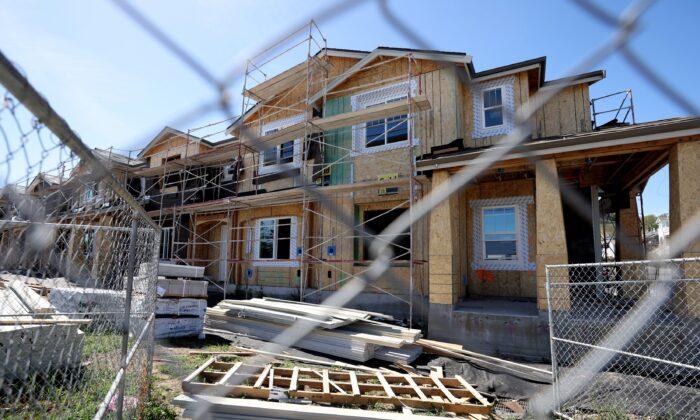Rising mortgage rates caused by interest hikes by the Fed have contributed to reduced affordability for younger and first-time home buyers.
The Federal Reserve has hiked its policy interest rate by 75 basis points since March, to cool down rising inflation, with the central bank expected to increase rates by 50 basis points each at its next two policy meetings in June and July.
The housing market is very sensitive to changes in interest rates, making it the most vulnerable sector of the economy, with the number of building permits being a leading indicator of its strength.
The report continues to show a massive backlog of single-family houses awaiting construction, which is an indicator that the effect on home construction remains marginal for now.
Construction backlogs rose to their highest level in over 15 years, with overall backlogs hitting their highest record since 1974, with the industry being greatly affected over the past year by soaring costs and continued shortages of building materials.
Builders are also finding difficulty in securing lots and a severe labor shortage.
Housing starts decreased 0.2 percent last month to a 1.72 million annualized rate, a downward revision from 1.73 million in March.
The greatest decline was concentrated in single-family housing, with permits plunging 4.6 percent to a rate of 1.110 million units, the lowest level since last October.
Permits for buildings with authorization of five units or more units fell only 0.6 percent month over month to a rate of 656,000 units.
March rates for building permits were revised upwards, while those for housing starts were revised downwards.
The amount of single-family properties under construction continued to rise last month, reaching 815,000 or 1 percent, the most since 2006.
Multi-family homes under construction increased 2.3 percent to a rate of 811,000 units, the highest since February 1974.
“There is insufficient statistical evidence to conclude that the actual change is different from zero,” noted the Census Bureau report.
However, both metrics were higher than a year ago despite the month-over-month declines.
Housing starts were 14.6 percent higher over the same month in 2021, while permits were up 3.1 percent the same month year over year.
Single-family home starts fell 7.3 percent in April to an annualized pace of 1.1 million units, while multi-family housing starts which include apartments and condominiums, rose 15.3 percent to a rate 612,000 units, the highest since April 1986.
Housing completions dropped 5.1 percent to a rate of 1.295 million units, with single-family housing units being hit hard with a drop of 4.9 percent, while multi-family homes fell 6.6 percent.
Meanwhile, the average for a 30-year loan rose to 5.3 percent last week, up from 2.94 percent a year prior, the highest since 2009, according to Freddie Mac.
There are signs that pressures on supply and demand may be easing on both sides of the market, allowing firms to muddle through the massive backlogs.
These factors, combined with the steep surge in borrowing costs due to higher interest rates, have squeezed potential buyers out of the market, pushing down homebuilder sentiment in April to its lowest level since June 2020.
“Today’s housing starts report is more evidence that the single-family market is slowing,” Robert Dietz, the NAHB’s chief economist, said in a report from May 18.
A separate report from the Mortgage Bankers Association on May 18 showed home loan applications fall 12 percent last week from the prior week, reinforcing the news of tumbling demand.
Demand for housing was also reported to be down 15 percent on a year-on-year basis.
Stocks on Wall Street today were trading lower, with the Dow falling about 1,000 points.
The dollar rose against a basket of currencies such as the euro, amid the crisis in Ukraine, while U.S. Treasury also yields fell.
Reuters has contributed to this report.





